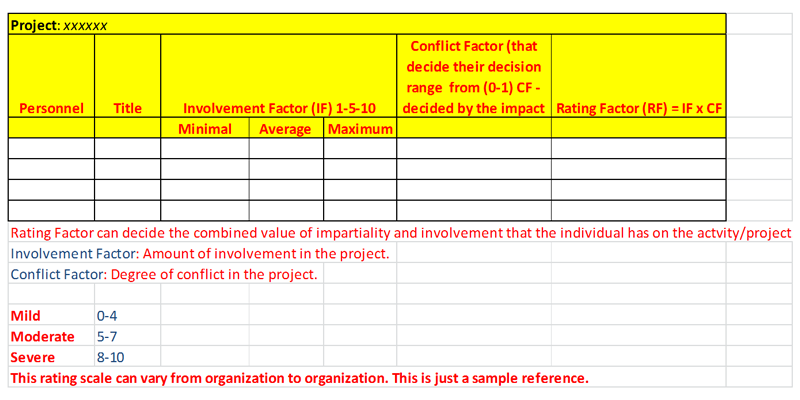Per Merriam-Webster, it is defined as not partial or biased.
Per ISO/IEC Standard 17020 and 17065, it is defined as presence of objectivity meaning the conflicts of interest do not exist or are resolved, so that it does not adversely influence subsequent activities of the organization. It implies independence, freedom from conflict of interests. Freedom from bias, lack of prejudice, neutrality, fairness, open-mindedness, even-handedness, detachment and balance.
How to perform an impartiality analysis?
To perform an impartiality analysis/study, following factors can be considered, as applicable:
|






